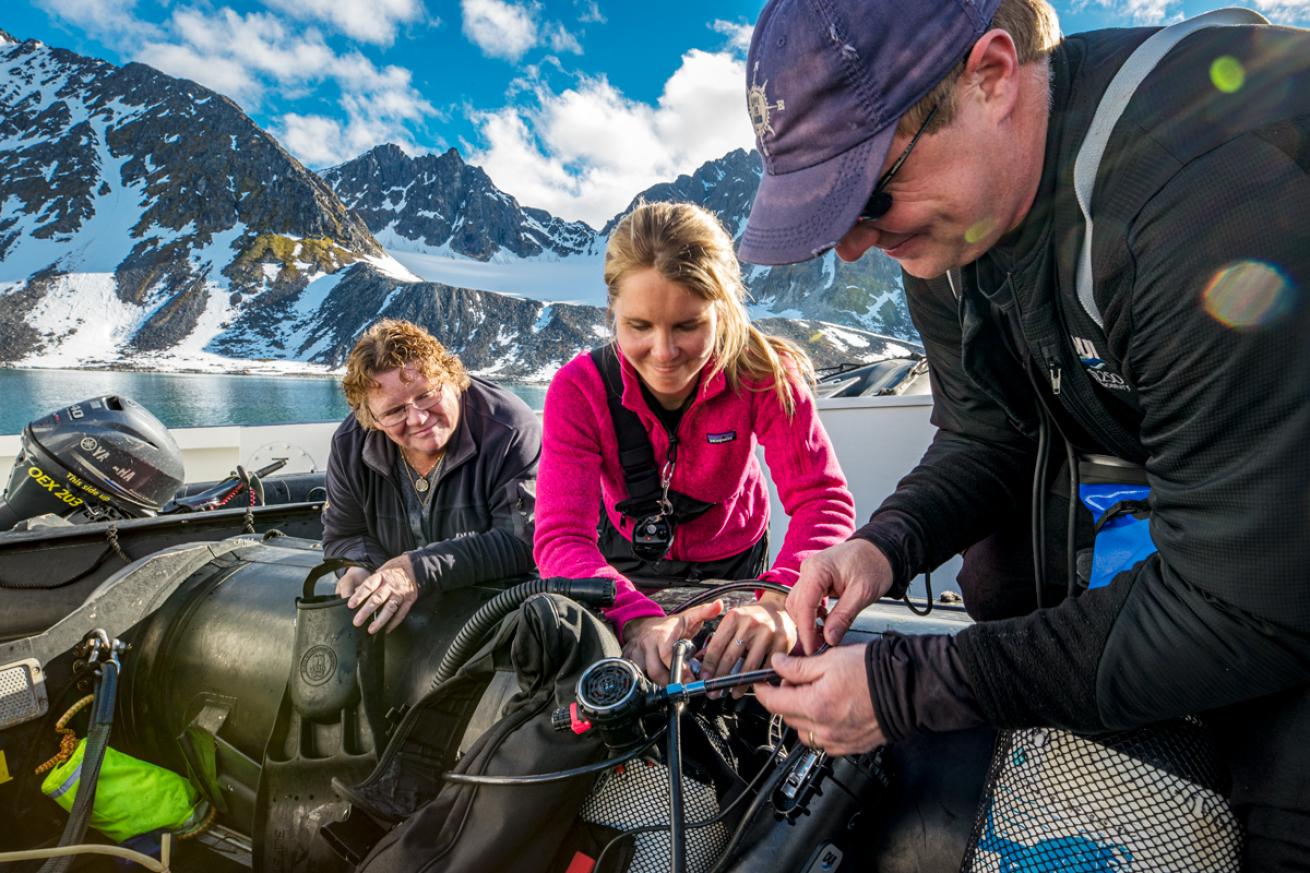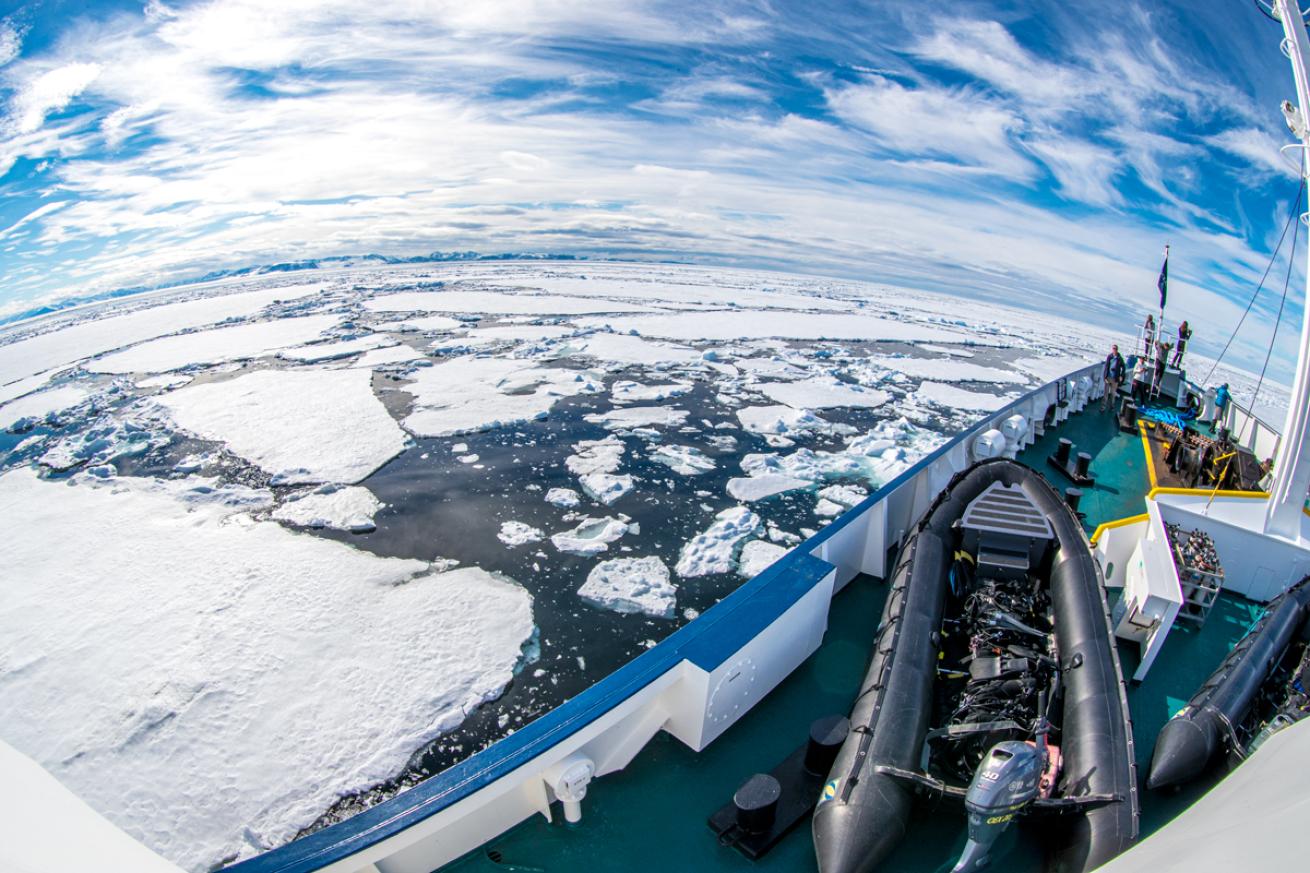How to Prepare for Remote Dive Travel

Annie CrawleyWhen diving in remote locations, minor gear issues can ruin your trip. It is important to carry extra gear in case of malfunction.
Dive trips always require a bit of planning, but remote locations require even more consideration than highly visited tourist spots with access to top-of-the-line medical facilities. There are increased risks and challenges involved if you need an unexpected trip to the hospital. No one plans to get sick or bent, or have equipment malfunction, but being a responsible diver means creating an emergency action plan. Here’s how I approach mine.
When diving remote locations, pack all of your own equipment, including backups. My spare kit for remote diving includes all the usual suspects plus many extra pieces of equipment. Using a PADI Five Star facility is ideal, but many remote destinations lack dive centers capable of servicing or renting gear. For these instances, you’ll need an extra set of gear and spare parts, including batteries, chargers, O-rings and tools. A satellite communication device can provide considerable peace of mind in remote locations. The Garmin inReach Mini 2 is a compact satellite communicator that allows users to track their adventure and location. It offers two-way text messaging and an emergency SOS function, even when out of reach of cellphone coverage.
If you need emergency help when you surface, the interactive SOS message system can be used anywhere in the world. Although the unit is weatherproof, you need the inReach Mini 2 Dive Case, rated to 100 meters, in order to dive with it. In addition to a GPS device, carry a whistle or DiveAlert air horn that attaches to your inflator hose, plus a small plastic or stainless-steel mirror known as a heliograph for signaling with the sun.
When researching any dive destination, find out where the nearest recompression chamber is located in relation to where you plan to dive. Sometimes the chamber is a long boat or helicopter ride away. If you need evacuation, it can cost more than $10,000. All evacuations are not equal. It depends on the country, what services are available and the distance to the recompression chamber.
In addition to the standard DAN insurance that most divers carry, consider travel insurance. Find out what your personal health insurance covers in relation to your location and medical needs, and supplement any gaps in coverage with travel insurance.
Beyond creating your personal emergency plan and understanding the local tour operator’s plan, consider the hospital facilities at your destination. In many developing countries, hospitals may not have the same resources or amenities—such as food, sheets or blankets—as hospitals at home.
Before you go, make a travel appointment with your doctor. Consider how you would deal with a cut, fall, infection or animal sting. If you are allergic to certain kinds of medicine, it’s important to be aware of the alternatives and what is safe for you to take. Always carry a filled prescription from your doctor with a refill available so you can get it from a local pharmacy without seeing a local doctor.

Annie CrawleyFar-off diving locations are often well worth the trip—but they do also require a bit more preparation and advance thought.
Carry over-the-counter medications in your personal first-aid kit as well. Some to consider might be antidiarrheals, antacids, antihistamines, motion sickness medicines, cough suppressants, decongestants, pain and fever reducers, mild laxatives and sleep aids. Make sure you talk to your doctor well in advance as they might recommend a series of shots that require a number of weeks in between. Ensure your vaccinations are up to date.
Take extra care to avoid foot injuries from walking on rocky or volcanic beaches by packing appropriate beach shoes. Scratches on your feet can be very serious if they become infected. If you do get a cut, treat it with triple-antibiotic ointment and watch for signs of infection.
Although many tropical areas have a rainy season, weather events have become more extreme and unpredictable because of climate change. Carry appropriate protective gear for wet and windy weather, and know what to do in case of emergency. When arriving at your destination, learn where to go in case of a tsunami or tropical storm. Stay up to date with weather alerts before and during your expedition.
If diving nitrox, always analyze your tank and carry your own analyzer if possible. Set your computer more conservatively, and dive well within your limits. Remote diving goes hand-in-hand with advanced diving. Higher risk variables can change depending on weather, location, tides, prevailing currents, bottom composition and depths of your dives. Preparing to safely dive in remote locations, such as in the Arctic, has different considerations than diving in Malpelo, Colombia.
As a diver, you need to minimize risks on every dive day, and this starts with making sure you are in good health. Stay hydrated, get lots of rest, avoid drugs and alcohol, and know you can cancel a dive for any reason. Wear SPF-rated clothing to protect your skin from sunburn.
Being prepared is the key to your success for any remote dive destination. How you react to challenges is equally important. In any circumstance, remember to stop, think, breathe slowly, then act. Additional training can prepare you more for remote diving. The PADI Self-Reliant and Rescue Diver courses train you to recognize and mitigate risk, while becoming a more self-sufficient diver and a better buddy.










